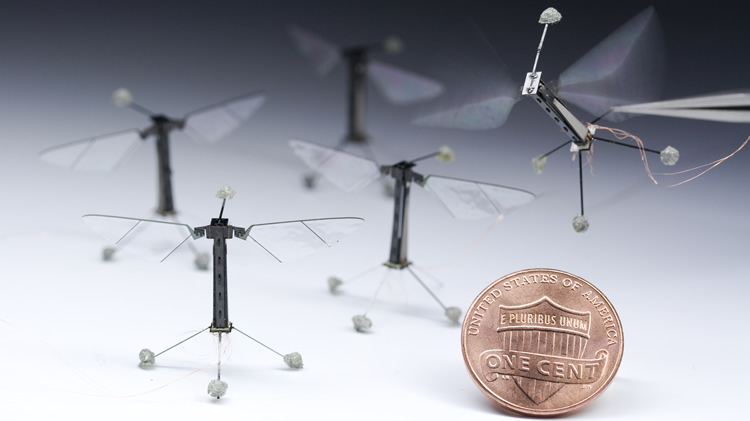Researchers toiling away in a Harvard University lab have developed what is said to be the world's most miniscule, guided, flying robot. Weighing just under three thousandths of an ounce, RoboBee with its 3cm wingspan borrows heavily from real flying insects – particularly flies – to become airborne.

One of the primary enigmas RoboBee posed to researchers was how to build electromechanical components both truly tiny and capable of sustaining flight. The device required parts that were too fine for traditional mechanisms like gears and pistons; RoboBee was also too small for most common silicon-based components, as well.
Instead, the team developed its own techniques to produce teensy weensy electromechanical components. Harvard researchers coined these parts as SCMs, or smart composite microstructures and they are derived from strong and ultra-light carbon composites.
"It's really only because of this lab's recent breakthroughs in manufacturing, materials, and design, that we have even been able to try this." one researcher noted. He later added, "This is what I have been trying to do for literally the last 12 years".
RoboBee's ethereally-thin wings beat an astonishing 120 times per second. To achieve this feat, a specially designed ceramic-based piezoelectric material was used. The substance expands and contracts when voltage is applied and removed, mimicking how a real muscle might work. As an added bonus, the system provides the pint-sized insectdroid with astonishing maneuverability – it can hover and make sudden changes in its position.
Before readers succumb to horrifying visions of a dystopian future where weaponized insect armies are saddled with high-tech surveillance equipment, it's important to know that this insect-inspired robot is still tethered to a wire for power. RoboBee is so small and so light, it likely can't support the weight of both a useful camera and battery pack. This also suggests we won't see laser cannons mounted on RoboBee in the immediate future. But with promising battery technologies lurking around the corner, its certainly not an impossibility.
A "fully flying wireless robot" is a just "few more years" away, researchers project.